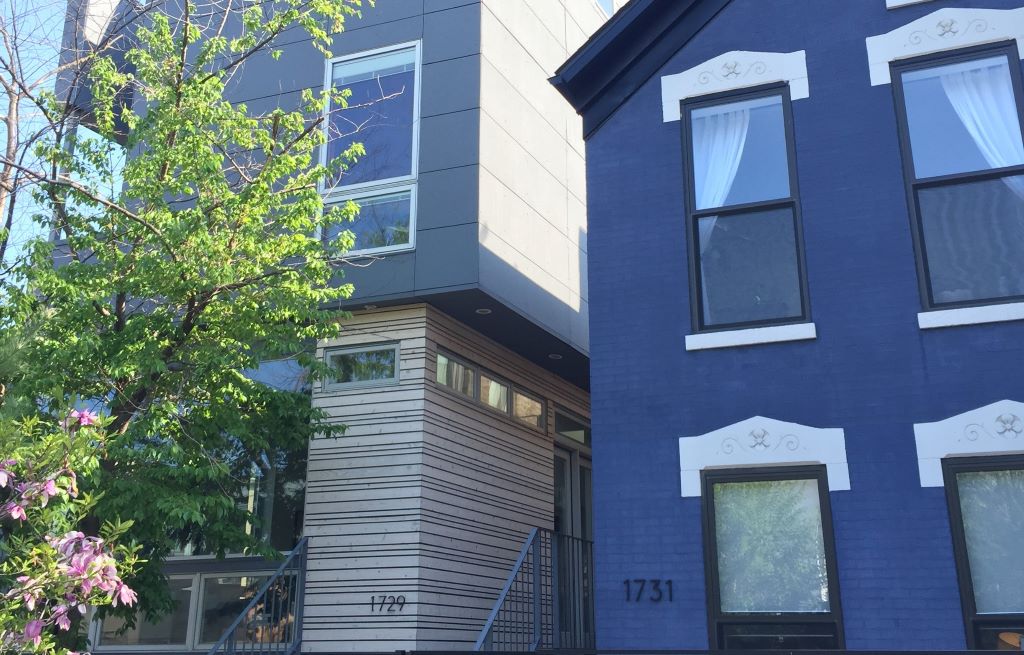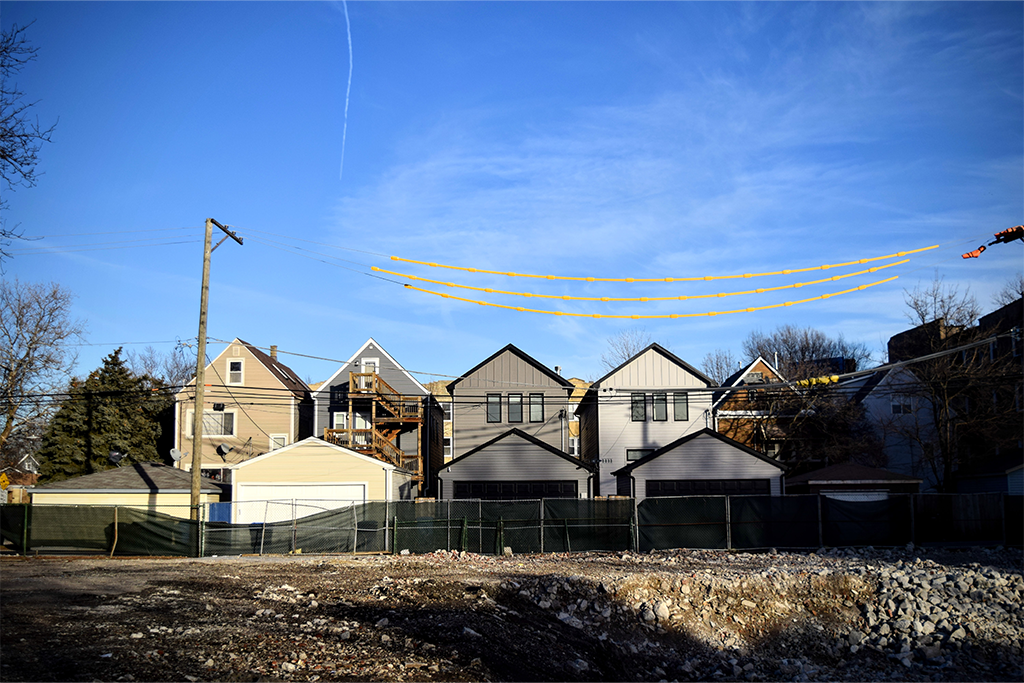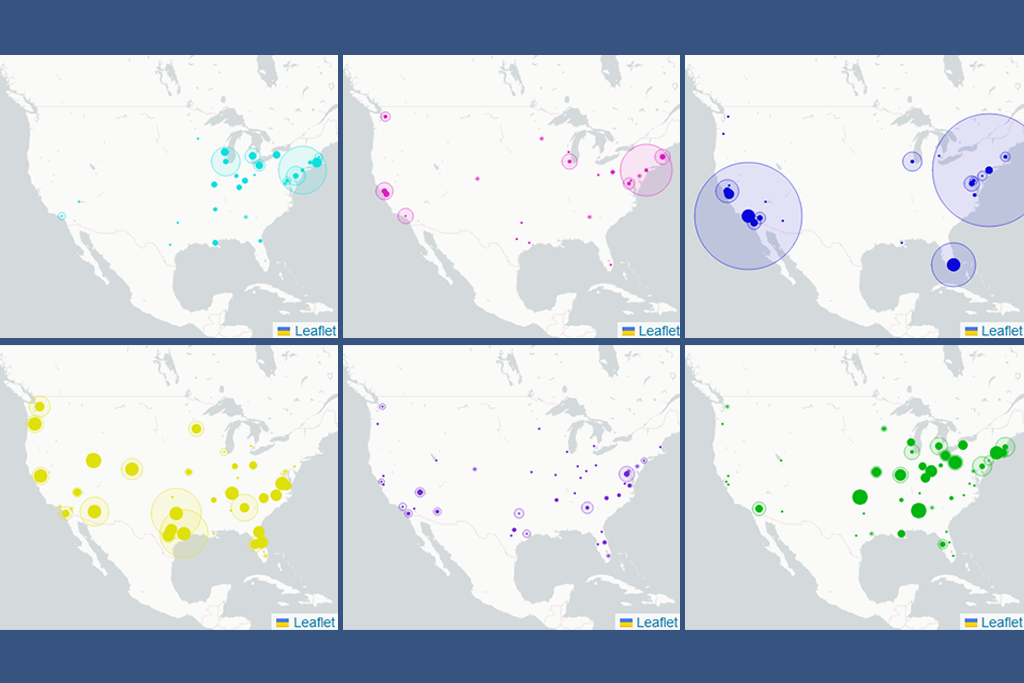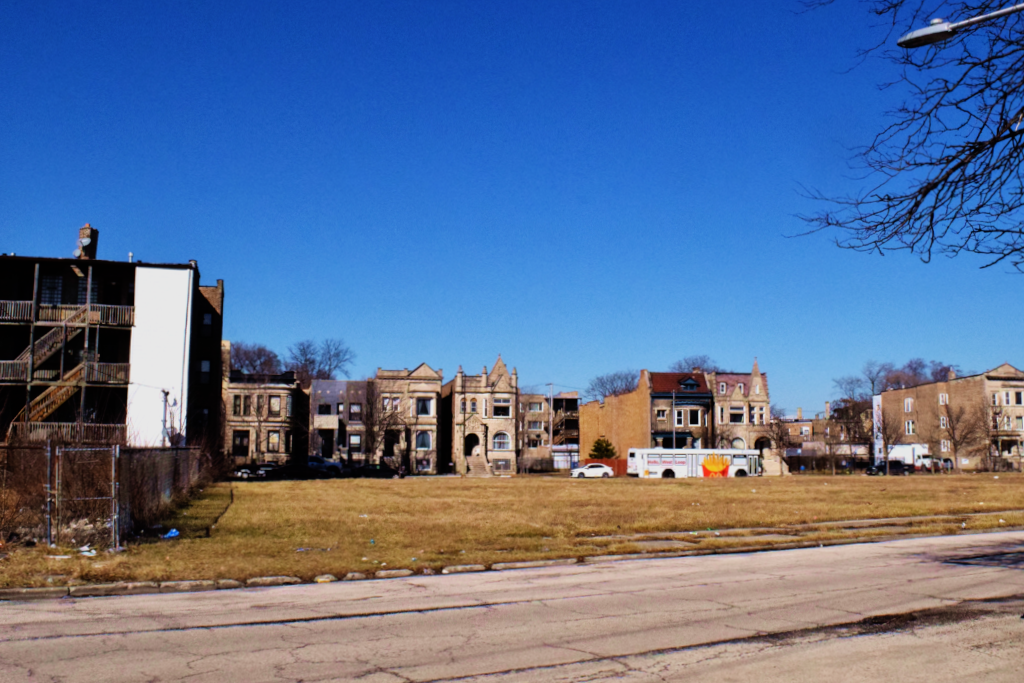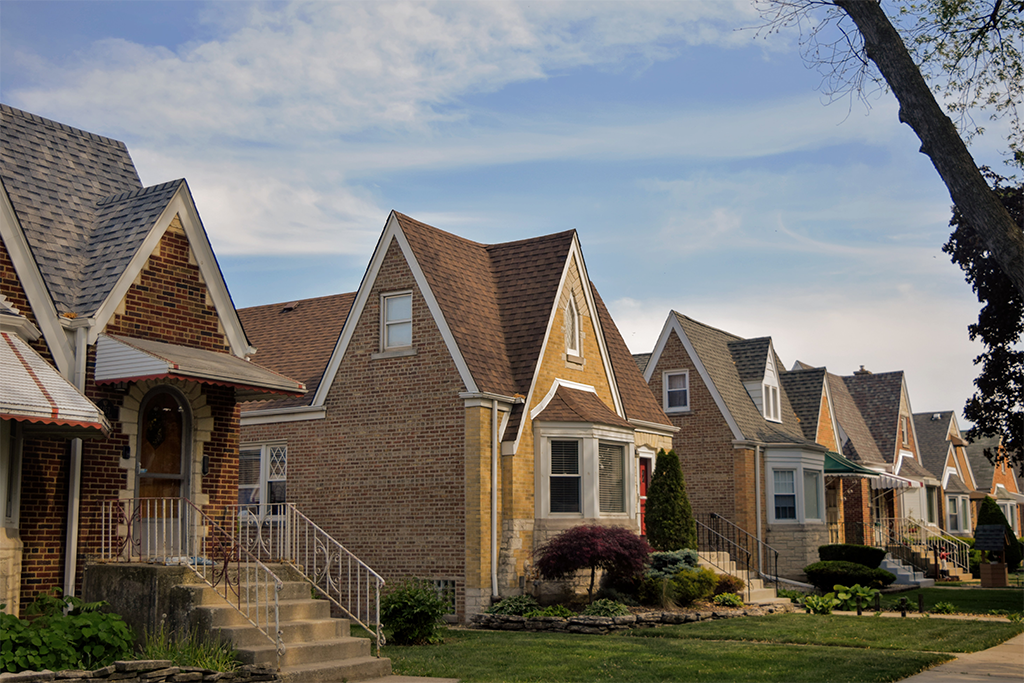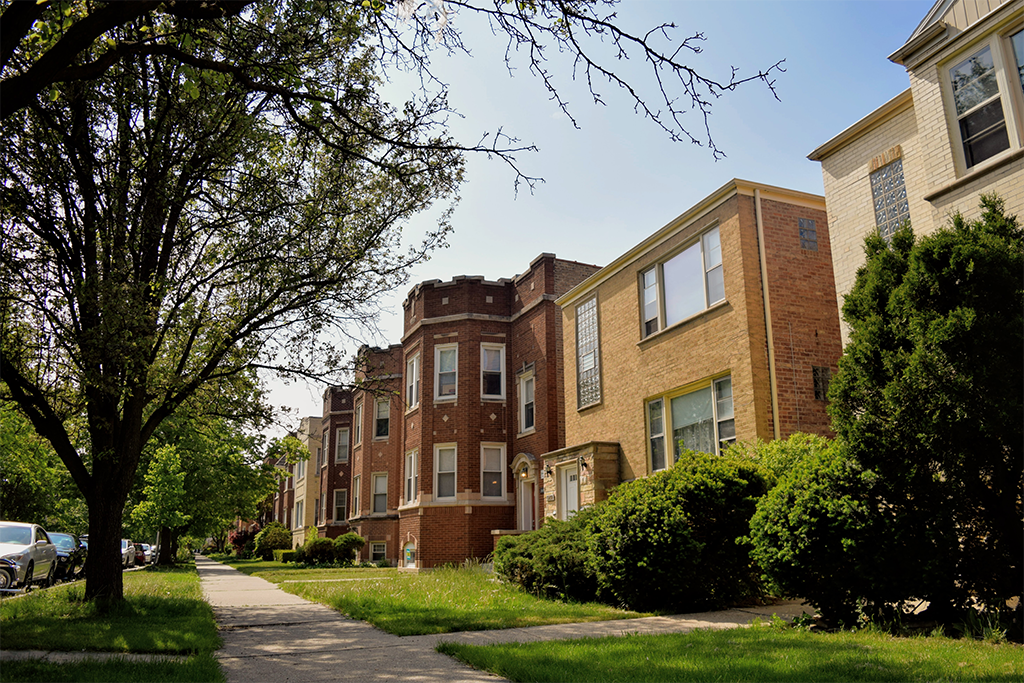The 2 to 4 unit housing stock plays a unique and critical role in Chicago’s overall housing supply by providing affordable rental housing, homeownership, and wealth-building opportunities. More than any other type of rental housing in Chicago, 2 to 4 unit properties are the most likely to offer lower-cost rents and family-sized units and these units make up a substantial portion of the housing supply in Chicago communities of color, particularly the city’s Latinx communities.
In response to concerns raised by local housing and community development stakeholders that these buildings are being lost citywide, a number of IHS research reports and technical assistance projects have highlighted the importance of and pressures facing the 2 to 4 unit housing stock in Chicago.
Building on this work, this analysis uses a unique data set to document the loss of the 2 to 4 stock in Chicago neighborhoods in an effort to understand the different ways that market forces put pressure on this key segment of Chicago's housing market. For more details on the importance of the 2 to 4 stock in Chicago neighborhoods, see The Characteristics of the 2 to 4 Stock in Chicago Neighborhoods report released in tandem with this research.
This analysis finds:
- Every type of neighborhood housing market is losing 2 to 4 unit buildings, but the loss is most acute in higher-cost neighborhoods on the city’s North and Northwest sides. In these neighborhoods, this loss is typically due to the replacement of 2 to 4 unit properties by single-family homes through conversion of the existing building or demolition and new construction. This phenomenon highlights how changing demand for housing, particularly demand for expensive single-family homes, is impacting the overall housing supply.
- In the city’s more affordable, moderate-cost neighborhoods, the 2 to 4 unit housing stock is generally more stable, but losses of 2 to 4 buildings are concentrated in a small number of census tracts with rising values or near ongoing or planned catalytic investment projects. These findings amplify calls by housing advocates regarding the need for proactive policies to preserve the existing lower-cost rental stock before it is lost to gentrification pressures.
- In lower-cost neighborhoods, the loss of 2 to 4 unit stock is most commonly seen through demolition and replacement by non-residential use, often vacant land. This phenomenon highlights the need for investment in both the broader community and the existing housing stock to reverse the tide of long-term population loss, historic disinvestment, and the ongoing legacy of the foreclosure crisis and Great Recession.
- Finally, the analysis shows that lost 2 to 4 unit buildings were far more likely to be associated with a foreclosure filing compared to the remaining, legacy 2 to 4 stock. This finding highlights the vulnerability of this stock, particularly at a time when the COVID-19 pandemic is having a disproportionate impact on lower-wage workers, renters, and small property owners, and raises the specter that the economic fallout of the COVID-19 pandemic could further deplete this unique housing resource.
These findings highlight the need for a comprehensive approach to preserving 2 to 4 unit buildings that 1) recognizes the stock’s critical importance to providing affordable rental housing, homeownership, and wealth-building opportunities in all Chicago neighborhoods and 2) addresses the spectrum of challenges facing these buildings, their owners, and tenants in different market contexts.
Background
Buildings with 2 to 4 units are a critical component of Chicago’s housing stock and play a unique role in providing both renter- and owner-occupied housing, comprising 26 percent of all residential units in the City of Chicago. According to forthcoming research from IHS's 2021 State of Rental Housing in Cook County, 2 to 4 unit properties made up over 35 percent of the city’s rental housing supply. These buildings are often owned by small “mom and pop” landlords who may also occupy a unit as their home while renting out the remaining units, providing affordable homeownership and wealth-building opportunities for these households. In Chicago, roughly 54 percent of 2 to 4 unit buildings had active homeowner exemptions in tax year 2019 and are likely to be owner-occupied.
Units in 2 to 4 unit buildings are also a critical component of a community’s supply of affordable rental housing for lower-income households, particularly in Chicago’s communities of color. According to national research from the University of Southern California and Enterprise Community Partners, rental units in 2 to 4 unit buildings tend to have the lowest rents of any building type and also serve renters with the lowest incomes. In Chicago, 2 to 4 unit buildings have the highest share of rental units with rents below $900, a key benchmark for affordability. Compared to multifamily properties, 2 to 4 unit properties are much more likely to offer family-sized units with roughly 40 percent containing three bedrooms or more. Additionally, 2 to 4 flats are particularly important to the housing stock in communities of color and to residents of color citywide. Roughly 60 percent of Latinx-headed renter households and 32 percent of African American-headed renter households live in 2 to 4 unit buildings. Nearly 46 percent of the total housing units in majority Latinx census tracts and nearly 30 percent of total housing units in predominantly African American census tracts are in 2 to 4 unit parcels.
The temporary or permanent loss of the 2 to 4 unit building rental stock is a critical community development issue impacting all Chicago neighborhoods. More than other residential properties, IHS analysis shows that 2 to 4 unit buildings were more significantly impacted by foreclosure during the Great Recession than other property types with nearly 30 percent of 2 to 4 unit parcels associated with at least one foreclosure filing since 2005. In the years following the Great Recession, as rental housing demand and the overall rental supply in Chicago grew, the city still saw losses to the 2 to 4 rental stock. IHS's upcoming State of Rental Housing in Cook County report finds that between 2012 and 2019, the city lost roughly 6 percent of its 2 to 4 unit rental stock. As this analysis will show, it is likely that many of these units have been permanently lost to conversion or demolition and, once lost, are unlikely to be replaced and if replaced are unlikely to be affordable. Due to the importance of this type of housing, it is critical to affordable housing policy to understand the factors driving the loss and instability of these rental units and buildings in different neighborhood market contexts. Without intervention, this essential component of Chicago's affordable housing stock could be further threatened by the economic fallout of the COVID-19 pandemic.
This analysis uses a unique data set from the IHS Data Clearinghouse to begin to understand trends in the lost 2 to 4 stock and the pathways these lost properties take in different market contexts. It focuses on a group of properties that were identified by the Cook County Assessor as 2 to 4 unit buildings in 2013 and traces their property class and other characteristics into 2019 to determine whether or not they are still 2 to 4 unit buildings and, if not, how their property tax class changed over this period. The analysis uses a lens of neighborhood market values to highlight the variation in the different ways that 2 to 4 unit buildings are lost in different market contexts. Census tracts are segmented by the sales price characteristics of neighborhoods based on IHS’s lower-, moderate-, and high-cost housing market typology which divides city neighborhoods into the top, middle, and bottom thirds based on sales prices of 1 to 4 unit properties. For a map of high-, moderate, and lower-cost Chicago census tracts in 2020, click here. For more on the study methodology for Patterns of Lost 2 to 4 Unit Buildings in Chicago, click here.
Key Findings
Chicago has seen its 2 to 4 unit housing stock lost to a range of other types of residential properties and non-residential land uses. Since 2013, Chicago has lost more than 4,800 2 to 4 unit buildings representing 11,775 rental and owner-occupied housing units or 4.2 percent of its stock of parcels and housing units. Figure 1 illustrates that of these, 47.5 percent of buildings lost were replaced with a single-family home, either through conversion of the existing structure or demolition and new construction. Additionally, 29.6 percent of lost buildings were replaced with non-residential uses, often vacant land. At the same time, 13.4 percent of lost 2 to 4 unit buildings disappeared from the data by 2019. Many of these can be traced to condominium buildings, but the property identification number changed, impeding the type of analysis used in this study. Finally, 9.5 percent of lost 2 to 4 properties became some other residential type but not a single-family home. Many of the changes detected on these properties were simply the result of additional housing units meaning they now have more than four units putting them into a different category of rental housing for the purposes of this analysis. For more on the study methodology, click here. To view the data appendix for the report and explore the data by other geographic units of analysis including City of Chicago community area and ward, click here.
Figure 1. Minor Class Changes for 2 to 4 Unit Properties in the City of Chicago, 2013 to 2019
Source: Cook County Assessor/IHS Data Clearinghouse
While all neighborhood market types lost 2 to 4 unit buildings since 2013, high-cost areas lost the largest share of their 2013 stock. Nearly 61 percent of all lost 2 to 4 unit buildings were in high-cost areas, 23.9 percent in lower-cost areas, and 15.3 percent in moderate-cost areas. Figure 2 illustrates the share of the 2013 stock of 2 to 4 unit buildings lost between 2013 and 2019 by neighborhood market type. It shows that high-cost neighborhoods lost 7.1 percent of the 2013 2 to 4 unit building stock - the largest share of any market type. By comparison, 3.5 and 1.8 percent of the 2013 2 to 4 unit building stock was lost in lower-cost and moderate-cost communities since 2013, respectively.
Figure 2. Change in 2 to 4 Unit Parcels in the City of Chicago by Neighborhood Market Type, 2013 to 2019
Source: Cook County Assessor/IHS Data Clearinghouse
The nature of the lost 2 to 4 stock differs by neighborhood market condition. The threats facing 2 to 4 flats are largely related to a mismatch between market demand and the supply of certain types of housing in a neighborhood. For example, many higher-cost neighborhoods on Chicago’s North Side have experienced recent increases in both higher-income households and families with children. This indicates increased demand for housing from households that may want more space and the means to afford expensive single-family homes. At the same time, other neighborhoods are dealing with the impact of historic disinvestment, long-term population loss, and the continued legacy of the foreclosure crisis, particularly in lower-cost areas. These factors have led to very different pathways for the lost 2 to 4 stock in Chicago neighborhoods connected to patterns of gentrification, displacement, and disinvestment. Figure 3 illustrates that nearly 78 percent of the lost 2 to 4 unit buildings that were replaced by single-family homes were in high-cost markets and over 65 percent of all 2 to 4 flats lost to non-residential uses were in lower-cost neighborhoods. The interactive map below (Figure 4) visualizes the lost 2 to 4 stock citywide and illustrates that the loss of 2 to 4 unit buildings through replacement by a single-family home is largely a phenomenon in higher-cost areas of the city, and in pockets of moderate-cost areas near amenities, while the loss of the stock to non-residential use is highly concentrated in lower-cost neighborhoods. Click on a census tract to view information on the tract’s community area, market type, and the total number of lost 2 to 4 unit buildings by type of change from 2013 to 2019. Use the widgets to the right to filter and explore citywide trends based on the most prevalent type of 2 to 4 building loss, market type, or both. For a full-page version of the map, click here.
Figure 3. Distribution of Minor Class Changes for 2 to 4 Unit Properties in the City of Chicago by Neighborhood Market Type, 2013 to 2019
Source: Cook County Assessor/IHS Data Clearinghouse
Figure 4. Interactive Map of Lost 2 to 4 Unit Parcels in City of Chicago Census Tracts, 2013 to 2019
Source: Cook County Assessor/IHS Data Clearinghouse
A small group of neighborhoods on the north and northwest sides of the city account for the vast majority of 2 to 4 unit properties that were replaced by single-family homes. Figure 5 highlights the top 10 Chicago Community Areas with the largest concentration of 2 to 4 unit properties lost to single-family homes. Of all 2 to 4s that were replaced by single-family homes citywide, nearly 75 percent occurred in these 10 Chicago community areas with the majority of this type of activity taking place in the top five neighborhoods. Neighborhoods with the highest concentration of 2 to 4s lost to single-family home conversion or new construction include high-cost neighborhoods such as North Center (15.1 percent of Chicago's total), Lakeview (11.7 percent), West Town (11.2 percent), Logan Square (9.8 percent), and Lincoln Park (7.9 percent). In addition, the interactive map above shows census tracts with the largest number of 2 to 4s lost to single-family homes. This type of activity also occurs in pockets of moderate-cost census tracts in otherwise higher-cost Avondale and Portage Park, and in Humboldt Park near The 606 on the Northwest Side and in Bronzeville, Oakland, and Woodlawn on the South Lakefront. As noted above, the replacement of 2 to 4 unit buildings with single-family homes is likely a response to strong demand for single-family homes in neighborhoods that otherwise have a limited supply of single-family housing stock and vacant land.
Figure 5. Distribution of Total Lost 2 to 4s to Single Family Homes in the City of Chicago by Top 10 Community Areas, 2013 to 2019
Source: Cook County Assessor/IHS Data Clearinghouse
Conversely, 2 to 4s lost to non-residential land use, typically to vacant land, are concentrated in lower-cost communities on the south and west side. As a result of historic disinvestment, the impact of the foreclosure and economic crisis, and a slow housing market recovery, many 2 to 4 unit properties have been lost and are now vacant land in Chicago’s lower-cost neighborhoods. Over 1,150 2 to 4 unit buildings were lost since 2013 in lower-cost communities, 80.6 percent of them to non-residential land uses. Of these, 89.1 percent are classified by the Cook County Assessor as vacant land. Figure 6 highlights the distribution of 2 to 4 properties lost to vacant land by the top 10 City of Chicago Community Areas and illustrates that 53 percent of all 2 to 4s lost to vacant land are in just seven City of Chicago community areas. The top five community areas with the highest shares of the city’s lost 2 to 4s to vacant land include Englewood (10.4 percent), West Englewood (10.1 percent), New City (9.9 percent), Austin (6.2 percent), and North Lawndale (5.8 percent). This type of activity is also seen in higher-cost areas and in some moderate-cost areas, but 2 to 4s lost to vacant land in these market types often appear to be sidelots or under development.
Figure 6. Distribution of Total Lost 2 to 4s to Vacant Land in the City of Chicago by Top 10 Community Areas, 2013 to 2019
Source: Cook County Assessor/IHS Data Clearinghouse
Across neighborhood market types, lost 2 to 4s are more likely to have been associated with a foreclosure filing than legacy 2 to 4 unit buildings active in both 2013 and 2019. IHS research has illustrated that 2 to 4 unit properties had the highest share of parcels with a foreclosure filing compared to single-family or multifamily properties in Chicago. Examining foreclosure activity on the lost 2 to 4 stock compared with 2 to 4 properties active in 2013 and in 2019, Figure 7 shows that lost 2 to 4s had a higher share of properties associated with a foreclosure filing since 2005 than 2 to 4 properties that remained in the stock as of 2019. In Chicago, 33.1 percent of lost 2 to 4s were associated with a foreclosure compared to 27.3 percent of these legacy 2 to 4s. This pattern holds across neighborhood market types, with the highest levels of foreclosure activity in lower-cost neighborhoods.
Figure 7. Share of Legacy and Lost 2 to 4s with at Least One Foreclosure Filing in the City of Chicago by Neighborhood Market Type, 2005 to 2019
Source: Cook County Assessor/IHS Data Clearinghouse
2 to 4 unit buildings were added to the stock between 2013 and 2019, but these gains do not offset losses in lower-cost and high-cost neighborhoods. The housing stock is not static, and 2 to 4 unit buildings are added to the stock through a number of channels including the addition of a legal basement apartment in an existing single-family structure, the conversion and reclassification of a single-family home, former commercial, or industrial property into a 2 to 4 unit residential property, new construction, or in some cases through the reclassification of five- and six-unit properties into 2 to 4 unit properties. Figure 8 shows that between 2013 and 2019, 1,699 2 to 4 unit properties were added to the stock in the City of Chicago, with 42.6 percent of all added 2 to 4s in high-cost communities. The addition of 2 to 4 unit parcels roughly offset losses of 2 to 4 unit properties in moderate-cost areas, but the loss of the existing stock of 2 to 4 unit properties in 2013 was not replenished in high- and lower-cost neighborhoods.
Figure 8. Newer 2 to 4s (Added 2013-2019) Compared to Lost 2 to 4s in the City of Chicago by Neighborhood Market Type, 2013 to 2019
Source: Cook County Assessor/IHS Data Clearinghouse
Many newly-added 2 to 4s in high-cost markets are likely to be less affordable. Figure 9 compares the 2019 assessed values for 2 to 4 unit buildings that were added to the stock after 2013 compared to legacy 2 to 4 unit buildings that were active in 2013 in high-cost markets. Segmenting the new 2 to 4 stock by former 2013 property class, it shows that with the exception of newly added 2 to 4s that were formerly single-family homes, added 2 to 4s have higher assessed values than legacy 2 to 4s, a proxy for market value. In lower- and moderate-cost neighborhoods in Chicago, assessed values for newly added and established 2 to 4s are generally similar. More research is needed to fully understand the characteristics of newly added 2 to 4 unit properties. However, higher assessed valuations of these properties relative to the legacy 2 to 4 unit housing stock indicate that many of the newly added 2 to 4s in higher-cost markets are likely to be less affordable than their peer properties.
Figure 9. The Difference in Median 2019 Assessed Values of Legacy 2 to 4s (Active in 2013) Compared to Newer 2 to 4s by Former Property Class (Added 2013-2019) in High-Cost Markets, 2019
Source: Cook County Assessor/IHS Data Clearinghouse
Discussion
The above analysis highlights the importance of 2 to 4 unit properties to Chicago’s overall housing stock, quantifies the loss of this stock in neighborhoods across the city, and illustrates the pathways these lost properties take in different market contexts. The analysis highlights the market pressures facing the stock in high- and lower-cost markets and also shows that being associated with a foreclosure seems to increase the risk of a 2 to 4 unit property being lost. These findings highlight the need for a comprehensive approach to preserving 2 to 4 unit buildings that 1) recognizes the stock’s critical importance to providing affordable rental housing, homeownership, and wealth-building opportunities in all Chicago neighborhoods and 2) addresses the spectrum of challenges facing these buildings, their owners, and tenants in different market contexts. Given concerns that COVID-19 will create ongoing financial and housing market instability, particularly for lower-income renters, these findings also highlight the need to provide assistance to both renters and small property owners to avoid further destabilizing the stock. IHS is continuing to support nonprofit partners and city agencies with data and technical assistance to help support the development of strategies to address the challenges facing 2 to 4s and that strive to invest in and preserve these important buildings. To learn more about different proposed solutions to address these issues, read The Need for a Collective Approach to Preserving 2 to 4 Unit Housing in Chicago authored by a collaborative group of organizations including Enterprise Community Partners, Communities United, Neighborhood Housing Services of Chicago, Greater Chatham Initiative, Garfield Park Community Council, New Covenant CDC, and Elevate Energy.
